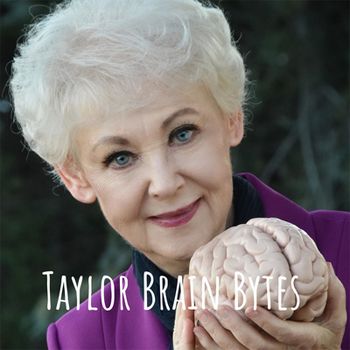Brain-Body “Omes”
Q. I am so confused about all the brain-body “omes,” and hope you can clarify them for me!
A. Good question! First is your genome. It includes your chromosomes and genes inherited from biological parents—in the old-fashioned way or via artificial insemination, for that matter. Your genome is believed responsible for about 30 percent of who you are. Chromosomes are single-coiled strands of deoxyribonucleic acid [DNA], nucleic acids [RNA], and proteins, made of amino acids. A 1962 Nobel Prize was awarded for the discovery of the elegant molecular structure of DNA, known as the double helix. Estimates are that 99 percent of your DNA is located in your chromosomes. The remaining one percent is found in the mitochondria, tiny energy factories inside cells that have a clearly defined nucleus. The mitochondria create adenosine triphosphate [ATP], the energy source needed to power almost all cellular activity. Genes are tiny bits of DNA that contain “blueprints” (architectural plans) for creating three-dimensional building blocks from proteins. About 25,000 genes, contained in your chromosomes, determine your inherited traits such as body build and height, male or female, the color of your hair, eyes, and skin, the potential talents that you can hone, and so on. Many factors, however, influence how blueprints are “read” and interpreted and implemented.
Next is your epigenome (epi meaning above the genome). It includes everything that is not genetics, such as the sum total of what happens to you in life beginning with gestation. It accounts for about 70 percent of your level of wellness and lifespan—or more. It is so powerful it can even impact your genome. It includes what happens to you, the choices you make, the habits you develop, the behaviors you exhibit, the stressors you are exposed to and how you respond, your job or career, and your relationships, both personal and professional. Epigenetics includes your lifestyle: what you eat and drink, where you go, what you do, whom you hang out with, what you listen to, what you read, what you watch, the sports you play, and the music you like, to name a few—and every choice you make for or against taking the best possible care of your brain and body.
There is also your microbiome. It includes all bacteria, fungi, and protozoa that live in and on the human body. The term reportedly was coined by Joshua Lederberg, who pointed out the importance of microorganisms inhabiting the human body in both health and disease. Estimates are that the human body contains more microbial cells than human cells—say 30 trillion cells and 40 trillion microorganisms. Living microorganisms, they are far too tiny to be seen without the aid of powerful electron microscopy equipment. There are differing types including the microbiome in the GI or gastrointestinal system; the skin microbiome, the vaginal microbiome, and so on. Each are structurally distinct and play a different role within their local environment. (Some want to include viruses in this category, but others consider them to be a separate virome.)
The human virome (also referred to as the viral metagenome) is the total collection of all type of viruses in and on the human body. Studies have shown a distinct viral profile in each person in the research. Viruses can attack human cells. They may also infect other organisms in the human body including bacteria. Some viruses are capable of causing diseases, while others help in a variety of body processes and are very. Viral infections of humans include chronic infections that may be asymptomatic or that may be associated with serious, even fatal diseases such as AIDS. Many diseases, the causes of which have not be definitely identified, may be of viral origin. Greater than 8% of the human genome are believed to be endogenous retroviruses. There is some evidence of their association with diseases such as amyotrophic lateral sclerosis, multiple sclerosis, and rheumatoid arthritis. Whether or not they are definitely causal, however, or just linked with them, is still uncertain.




